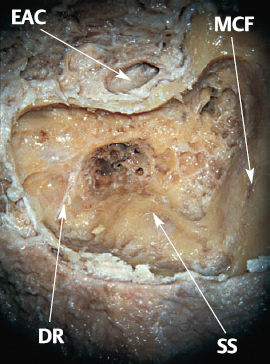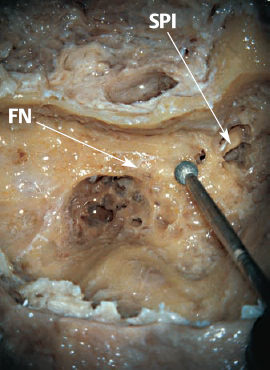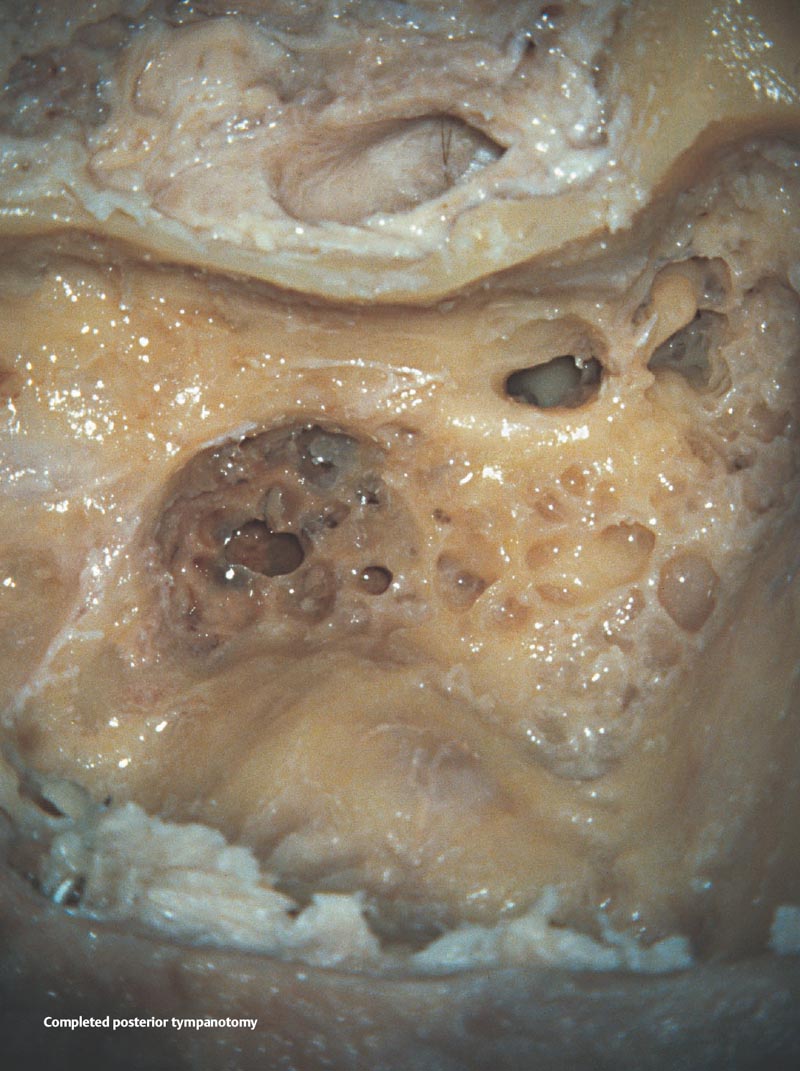6 Posterior Tympanotomy Opening a window from the mastoid to the middle ear between the facial nerve and chorda tympani, following a cortical mastoidectomy. It is also known as the “facial recess approach”. A posterior tympanotomy is mainly carried out in “intact canal wall” cholesteatoma surgery, cochlear implantation, and active middle ear device implantation. After the cortical mastoidectomy has been carried out, the bone is ready for the posterior tympanotomy. Posterior tympanotomy does not always require a mastoid cavity as large as in the classical cortical mastoidectomy. However, a classical cortical mastoidectomy cavity allows better exposure and an easier posterior tympanotomy procedure. DR: Digastric ridge EAC: External auditory canal MCF: Middle cranial fossa (dural plate) SS: Sigmoid sinus (dural plate) A close-up view of the facial recess area where posterior tympanotomy will be carried out. The facial recess is limited superiorly by the short process of the incus, anteriorly (anterolaterally) by the chorda tympani, and posteriorly (posteromedially) by the facial nerve. This critical triagonal area is illustrated in the figure. FR: Facial recess Using a small diamond burr, drilling of the facial recess triangle is started. The burr should be moved parallel to the axis of the expected position of the facial nerve. The reflection of the facial nerve through the bone is pink in color during the live operation, but white on the cadaveric temporal bone. II: 2–3mm diamond burr MIL: Short process of incus FN: Facial nerve SPI: Short process of incus Definitions and Tips
Definition
Indications
Anatomical Orietation

Surgical Steps



Posterior Tympanotomy
Only gold members can continue reading. Log In or Register to continue

Full access? Get Clinical Tree



